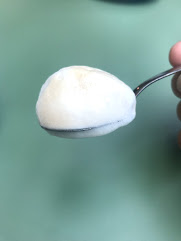Management vs Leadership in the Globalization/localization industry. Is it the same, is it different?
I write this post from a coffee house in the airport in Rome, waiting for my flight to go to Spain. This cappuccino that I am savouring puts almost end to 2 wonderful weeks of vacation.
In these 2 weeks I have not only had time to disconnect on beautiful beaches of the Spanish Levant with my beloved mojitos, but I have had the opportunity to enjoy the wonder that is the south of Italy ! its majestic architecture, its spectacular gastronomic, the Neapolitan pizza! in my life I never tasted such a spongy dough! those babà with expressos 😋 ...... and what to say about the Italians!, they are super friendly! always smiling and ready to help us with advice about to visit, restaurants to go etc. etc Happy days!
I also had time to read! A little bit of everything, fiction novel (Ready Player One), I have re-read the biography of Richard Branson and I have also read a couple of essays by John Paul Kotter.
John is a professor at the Harvard Business School. And he writes regularly about change management, strategy, and leadership. And I liked the essay that I read about "What leaders really do".
Why do I like it?
He explained that leadership is not innate, that it's not something either you have or not, he talked about the difference between leadership and management; and there was a sentence that it resonates with me.
"Nor is leadership necessarily better than management or a replacement for it.
Rather, leadership and management are two distinctive and complementary systems of action. Each has its own function and characteristic activities. Both are necessary for success in an increasingly complex and volatile business environment "
Amen to that! I think that in the Globalization / Localization industry I have often seen that we did not know how to create this balance, and that there was a lot of focus on management and little in leadership, or that there was a lot of vision, but little execution, with which at the end more than leadership was a wish list, castles in the air!
When there is a lot of management without leadership, we may not be prepared to face this changing world that we are experiencing today.
One day you can be a leader in the market and 10 years later irrelevant (Nokia, Palm, Yahoo ...)
Let's see all this in detail to understand in the localization industry how Management is different from Leadership, but also, how we can make them coexist
Globalization Management activities vs Leadership activities
Major changes are more and more necessary to survive and compete effectively in this new environment.
More change always demands more leadership.
Planning / Management vs Setting direction
Let's take as an example cost management.
When we are working with our localization projects obviously cost is important.
Now, what would be the activities related to cost management from a localization perspective vs cost leadership?
Cost management would be:
- check that the POs sent to us by our linguistic providers are correct,
- that the rates for words are correct,
- that the number of words is correct
- that Project management fee is correct,
basically, it's all about bringing predictability and order to the complex world of cost management. Now, what might be the complementary activity of Cost Leadership?.
Cost Leadership would be all related activities with:
- setting the direction on what our cost strategy is,
- find an answer to questions such as, what kind of cost structure do I want for my g-localization department?
- What strategy should we take? Outsourcing or an In-house team?
- If it's outsourcing, do I want to work with several LSPs or a bigger LSP and look for cost-saving for large volumes?
All these questions are related to Leadership, we are looking to produce change. Setting the direction of that change is crucial, that's why Localization leadership is essential to work.
Organizing / Staffing vs Aligning people
Organizing people is also very different from aligning people
Organizing/staffing people is a localization management activity. While Aligning people is a leadership task.
For example:
1. Identify the activities that we need to execute a Localization QA pass.
2. Group these activities according to the skills required to complete them.
3. Establish the sequence in which these activities must be completed.
4. Assign localization specialists to each activity.
Somehow what we are doing is to look for the right fit between people and tasks. All those activities are, Management.
Now, what's the equivalent activity to Leadership in this Localization example?
We would need to look at the big picture.
Quality is complex and there are many parts that are interrelated one with each other. A localization QA leadership effort would be composed of tasks such as:
- How will content be managed?
- which content will be audited
- how quality looks like for me and my company so we are satisfied.
-Which metrics will we pay attention?
- How are we going to publish the KPI?
- And so on ...
All these examples are related to establishing a vision, we do not look for a fit between the process and the person as it is looked for in the example that I gave before (localization management).
Here what is sought is a fit between people and vision (localization leadership). That's why the key to leadership is communication. We need to "sell" our vision of how we will handle the linguistic quality program to many people, not only to our internal team who are what will finally execute many of these tasks, but we also have to communicate this vision to our language partners and also to our stakeholders
Leadership is all about convincing different people that a different future is possible
Solve problems / Provide control vs. Provide motivation
I remember when I was little that we went with the school to visit a factory that made cookies with the school! The dream of any child!, I felt like Charly in the chocolate factory! Wonka! Wonka! Seeing those huge machines produce hundreds and hundreds of cookies was a fascinating experience.
I remember that there was a machine that it was splitting a cherry in 2 and an operator put them in the cookie. Its mission was that the cherry was more or less symmetrically cut. In a Factory that's exactly what management and quality mean; we need control mechanisms; We need to compare results with the plan and take action when a deviation is detected. The goal is as possible to error-free
As Kotter put it
"The whole purpose of systems and structures is to help normal people who behave in normal ways to complete routine jobs successfully, day after day. It's not exciting or glamorous. But that's management "
I guess that's how the "cherry cookie guy" might feel.
Leadership is really different, especially when working with knowledge workers. Since we are articulating a vision we need to explain to our teams how that vision is going to impact them, how this will change their lives (hopefully in a positive way!) And how are they going to be part of it. Leadership here is about motivating and caring for our teams, it's about rapport building, connect with them and show empathy. It's about being there to help them when they are struggling, being available to coach them and provide feedback. The goal is to help them to grow and reward them when necessary. Since creating ideas is the goal of a knowledge worker, as leaders, we need to create the conditions to make this happen. When this is done the task is intrinsically motivating.
Time to end this post now! it is not long before I have to get on the plane, I hope that this post has served to understand a little bit better the differences between management and leadership.
The myth that leadership skills are innate is that ... a myth; the myth that we must choose between being a manager, or a leader is that, another myth.
In the knowledge era we are living management is important, and leadership as well. Both skills have to cohabit within us. The challenge is to combine and use them in a balanced and efficient way.
3,2,1 ... I turn off the computer, have a great and happy management and leadership week! 🙂
@yolocalizo























Localizability has always been a challenge small issues in source content often lead to big problems later in translation. In this post, I explore how AI is giving localization teams a powerful new way to improve source quality, reduce friction, and create better content for every market right from the start.